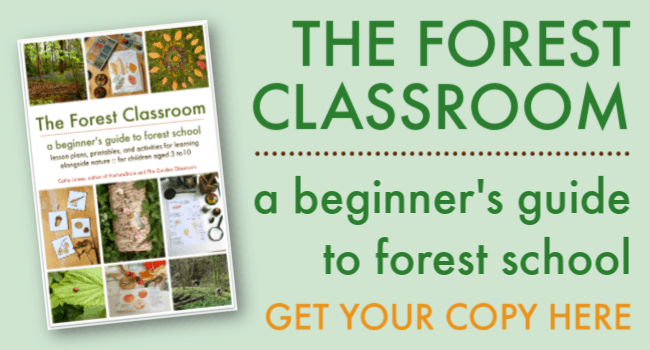Show your children how to identify and forage for elderberries and cook up some delicious elderberry syrup.
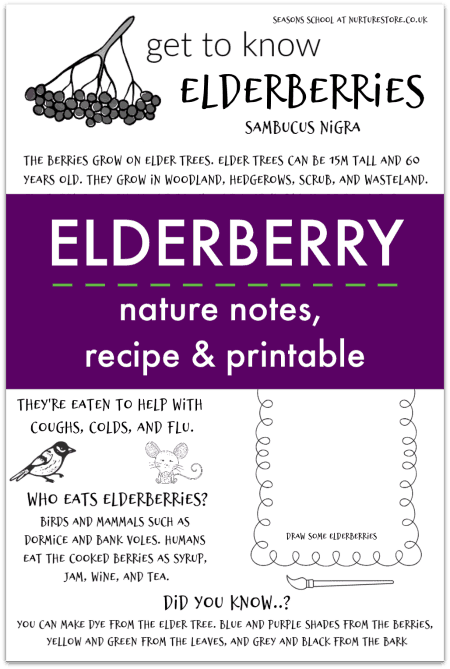
Elderberry picking guide
Elderberries are abundant, easy to identify, and delicious when cooked up into a fruity syrup.
Use these notes and my printable nature journal pages to host an elderberry lesson in your forest school or garden classroom.
In this lesson you can:
:: learn about elderberries and how to identify them
:: make a delicious and healthy elderberry syrup
:: make elderberry paint
:: printable a free nature journal page all about elderberries
:: join the Seasons School mailing list for regular free forest school and garden classroom teaching materials
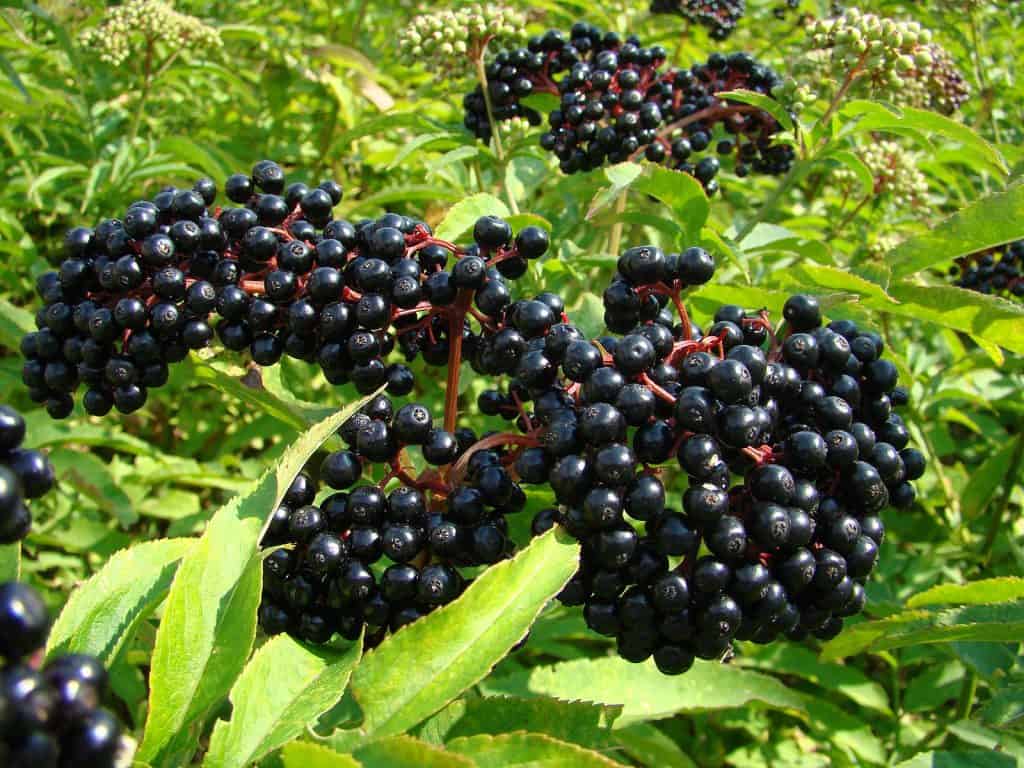
How to identify elderberries
Elderberries are from the elder tree, Sambucus nigra.
The name elder is from the Anglo Saxon word aeld which means fire. People used to blow through the hollow elder stems to get their fire going in the hearth.
Elder trees grow up to 15m tall and live for 60 years. It’s leaves are oppositely arranged, pinnate, and have 5-9 leaflets per leaf. Each leaf can be 5 – 30 long, with serrated margins on the leaflets.
In the spring, the trees white elderflowers are picked and used to make elderflower cordial. In the late summer and autumn the unpicked flowers develop into elderberries.
The shiny black berries are held on red stalks. The berries are small but produced in big clusters.

Elder folklore
Some people say planting elder near your home will protect you and keep the devil away. Others think the trees are home to a spirit called Elder Mother.
The elder wand is very significant in the Harry Potter books. Harry Potter and the Deathly Hallows was going to be called Harry Potter and the Elder Wand but J K Rowling changed her mind.
Can you pick elderberries?
Elder trees are poisonous. You should never eat the leaves, bark or uncooked berries.
The flowers and cooked berries are edible. In fact, they are delicious and health-promoting.
The berries are in season between August and October.
They change for green to red and then to black. Pick only the ripe, black ones.
Only pick if there is an abundant crop of berries, and only take what you will eat. Be sure to leave plenty for birds and other animals.
Don’t forget to say thank you to the tree for sharing it’s berries with you.
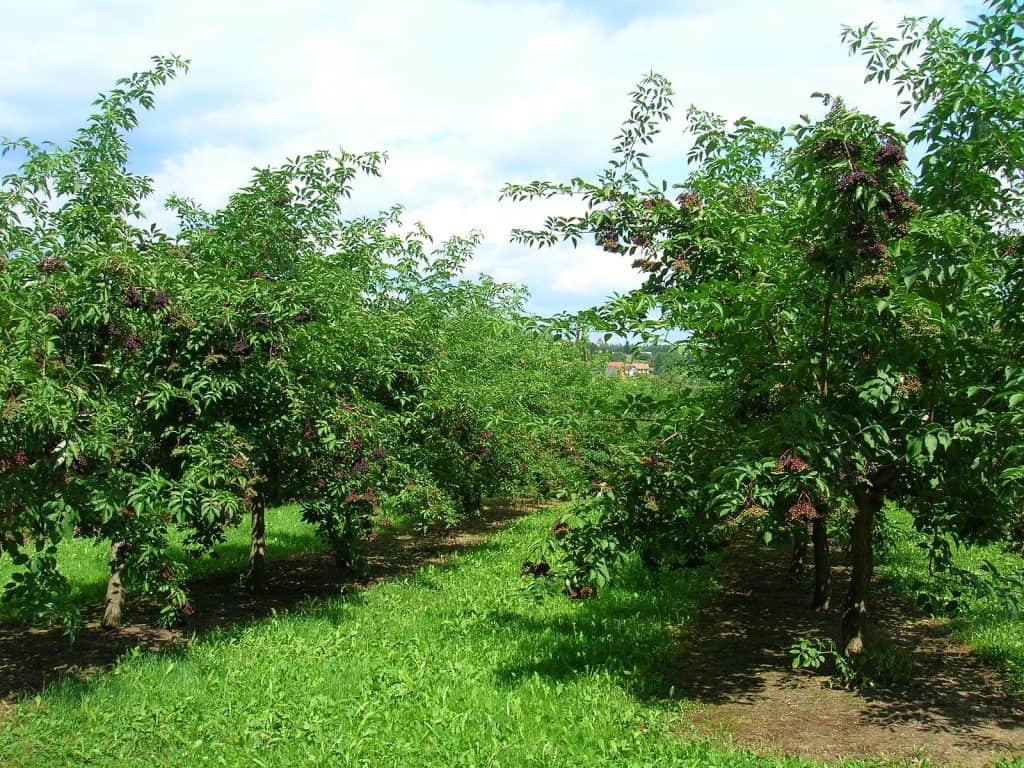
Where is the best place to pick elderberries?
Elders grow in woodland, hedgerows, scrub, wasteland and road verges.
The trees can be found across temperate to sub tropical regions of the Northern Hemisphere, Australasia and South America.
If you noticed the pretty white elderflowers in spring, head back to the trees in the late summer and autumn to gather berries.
Are elderberries edible?
Elderberries are eaten by birds and mammals such as dormice and bank voles.
While the bark, leaves and uncooked berries are poisonous to humans, the cooked berries are delicious and very healthly.
Elderberries are considered immunity boosting, and contain antioxidants, carotenoids, flavonoids, and Vitamins A, B, and C.
Elderberries are thought to be a great treatment for coughs, colds and flu.
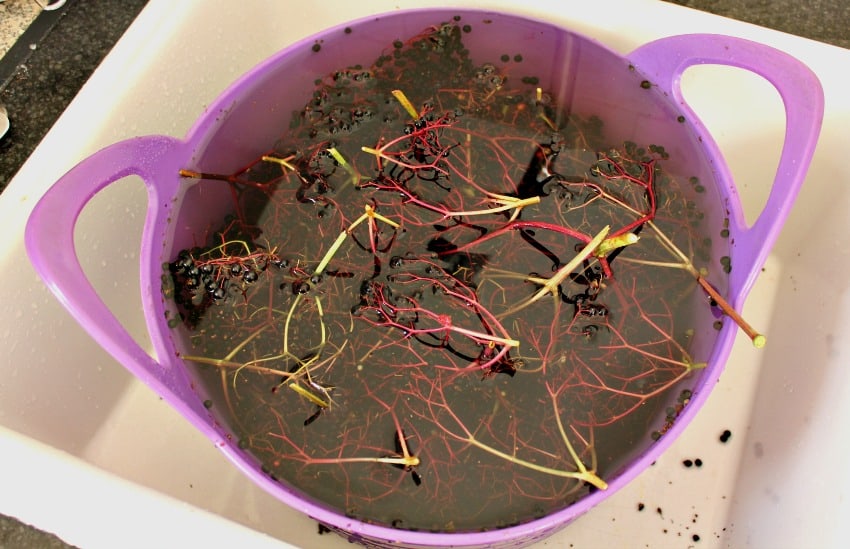
Elderberry recipes
Elderberries are most often used for syrup, cordial, wine, and jam.
You can add a handful of berries to apple pie and apple crumble.
Use this easy elderberry syrup recipe, which you can cook in the kitchen or over your forest school campfire.
Easy elderberry syrup recipe
Begin by giving your berry stalks a shake to set any little bugs free.
Then wash your berries very well in plenty of water.
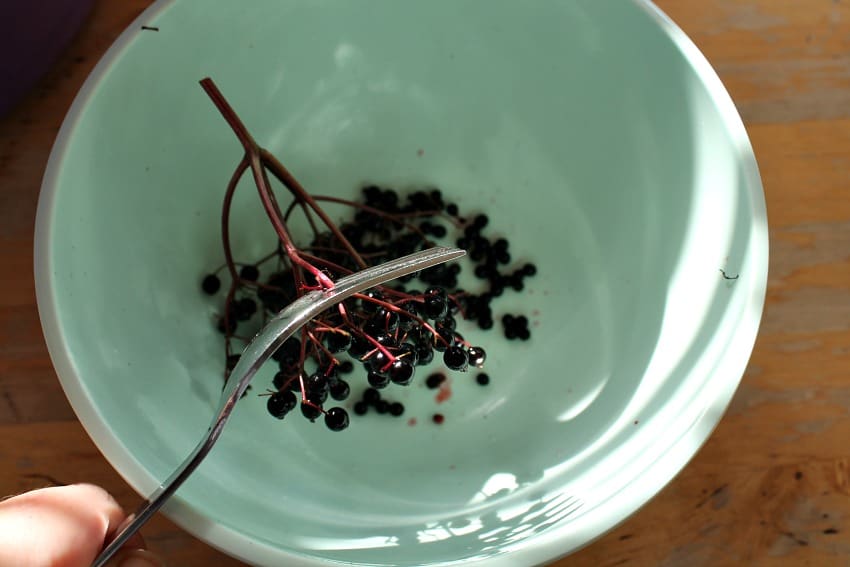
Use a fork to ping off all the berries into a bowl. Run the tines of the fork like a rake along the stalks of your berry cluster and the berries will quickly and easily release.
Discard the stalks and only use ripe, black berries for your syrup.
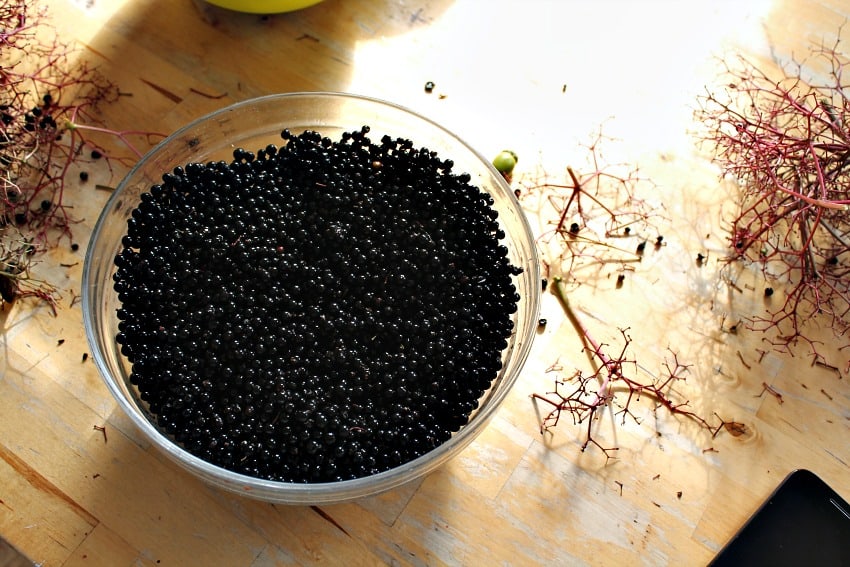
Place your berries in a pan and just cover with water. Simmer the pan over a gentle heat to release the juices from the berries.
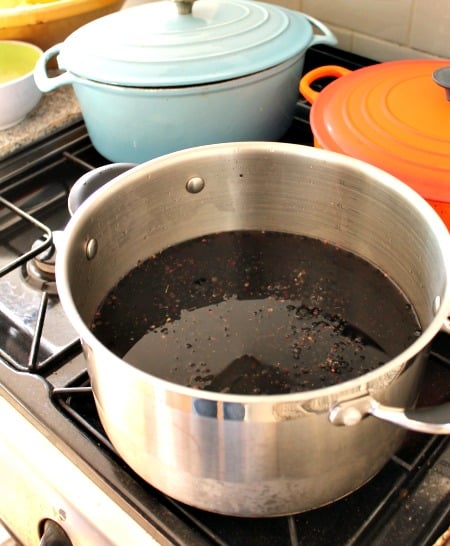
Strain the juice through a sieve and then place the juice back in a pan.
You can add spices such as ground ginger, clove and cinnamon to taste.
Add sugar or honey to taste.
Simmer for around 30 minutes on a low heat to thicken your syrup.
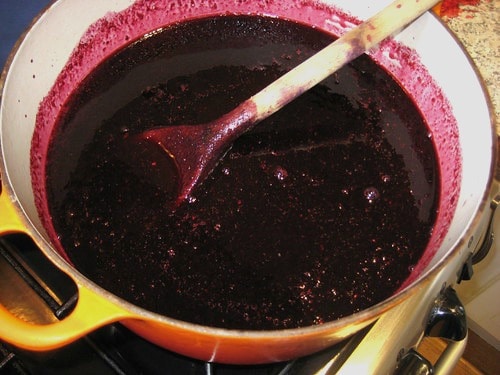
Store the elderberry syrup in sealed, sterilised bottles or jars.
The elderberry syrup is delicious poured on pancakes, porridge, or ice cream.
You can also take spoonfuls of the syrup to help with a cough, cold or the flu.
More elderberry recipes
Try these other elderberry recipes too:

Homemade elderberry watercolour paint
Elderberry dye was traditionally used to dye Harris tweed. Various colours of dye can be made form the tree:
:: blue and purple dye from the berries
:: yellow and green dye from the leaves
:: grey and black dye from the bark
You could use this guide to making your own watercolour paints to make paint from elderberries.

Printable elderberry nature journal page
You can use my elderberry nature journal page (see below for details on how to print it) to learn more about these fruits.
:: read key facts about elderberries
:: draw a picture of an elderberry – perhaps using elderberry juice to colour it in
:: add the printable to your nature journal. See my ultimate guide to nature journalling here.
More forest school teaching resources
Download The Forest Classroom, a beginner’s guide to forest school here.
And you can download my complete Seasons School curriculum here.
How to download this printable
To download my free printables, subscribe to my email list. Put your email address in the form below to sign up.
After subscribing, we’ll send you a welcome email which will give you instructions to download the free printables from NurtureStore’s Printable Library.
If you are already subscribed to our email list, check your last email from us and you’ll find a link to NurtureStore’s Free Printables Library at the bottom of the email.
Need more help accessing our printables? Click here.



